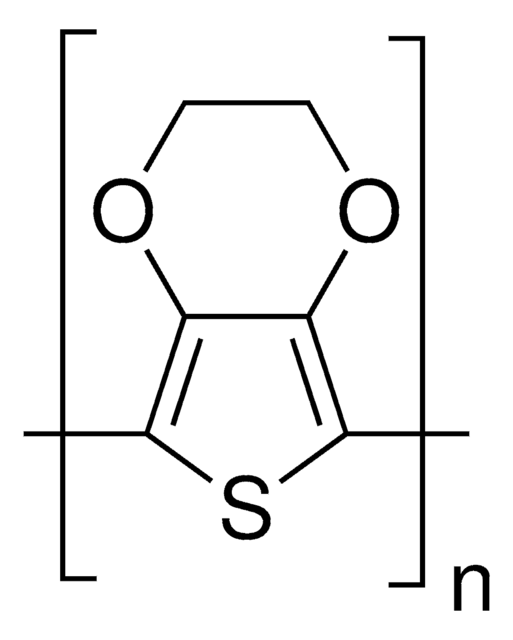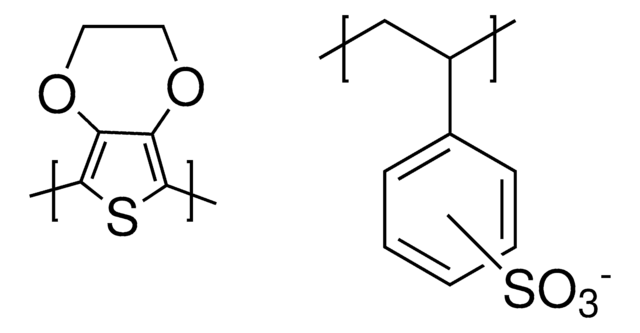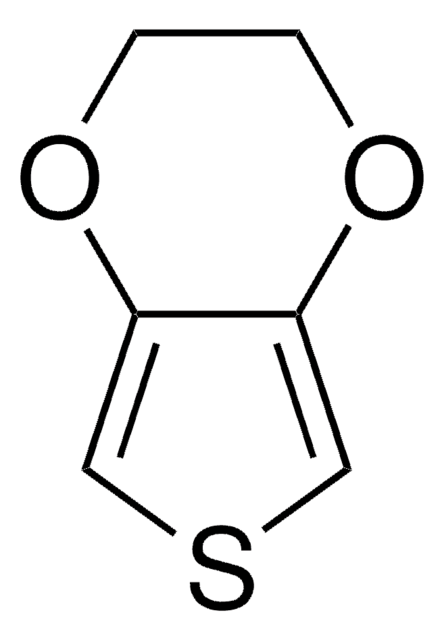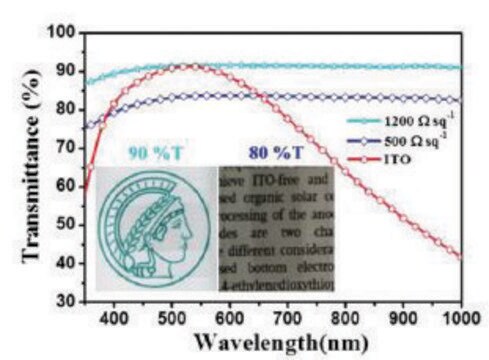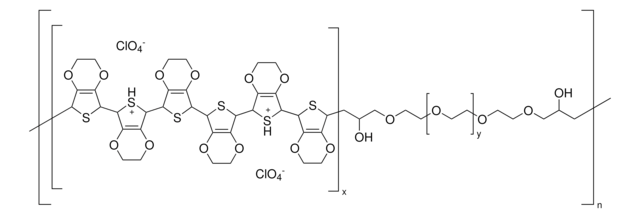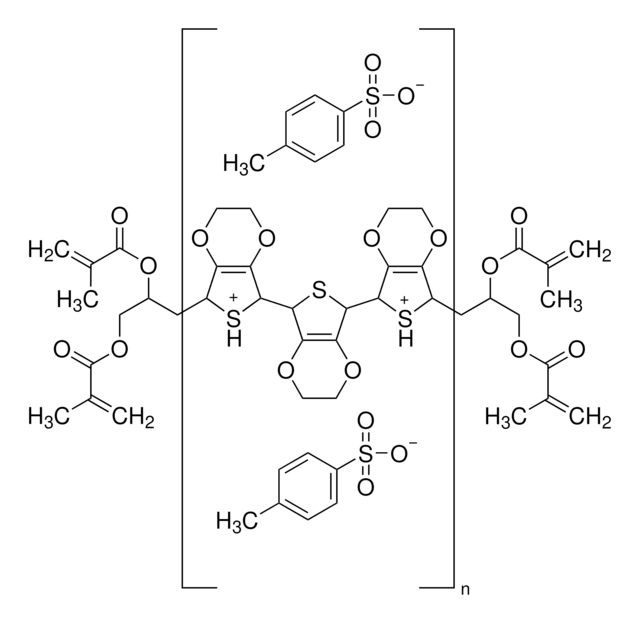739324
PEDOT:PSS
high-conductivity grade, 1.5% aqueous dispersion, neutral pH
Sinónimos:
Orgacon™ N-1005, PEDOT:PSS, Poly(2,3-dihydrothieno-1,4-dioxin)-poly(styrenesulfonate)
About This Item
Productos recomendados
Nombre del producto
Poly(3,4-ethylenedioxythiophene)-poly(styrenesulfonate), 1.5% in H2O, high-conductivity grade, neutral pH
Quality Level
form
liquid
greener alternative product characteristics
Design for Energy Efficiency
Learn more about the Principles of Green Chemistry.
sustainability
Greener Alternative Product
concentration
1.5% in H2O
resistance
<100 Ω/sq, >70% visible light transmission (40 μm wet)
refractive index
n20/D 1.335
pH
5-7
viscosity
<100 cP(22 °C)
density
0.982 g/mL at 25 °C
greener alternative category
storage temp.
2-8°C
¿Está buscando productos similares? Visita Guía de comparación de productos
Categorías relacionadas
General description
- low band gap
- good optical properties
- high conductivity
- low redox potential
- easy processing
- tunable film forming ability
Application
Legal Information
signalword
Danger
hcodes
Hazard Classifications
Eye Dam. 1 - Repr. 1B - Skin Irrit. 2
Storage Class
6.1D - Non-combustible acute toxic Cat.3 / toxic hazardous materials or hazardous materials causing chronic effects
wgk_germany
WGK 3
flash_point_f
Not applicable
flash_point_c
Not applicable
Elija entre una de las versiones más recientes:
¿Ya tiene este producto?
Encuentre la documentación para los productos que ha comprado recientemente en la Biblioteca de documentos.
Los clientes también vieron
Artículos
A detailed article on conducting polymer materials for flexible organic photovoltaics (OPVs) applications.
In the emerging field of organic printable electronics, such as OLEDs and organic photovoltaics (OPVs), there is a significant need for improved organic conducting and semiconducting materials. This paper reports our recent progress in two fields: 1) the development of solvent-based dispersions of the intrinsically conducting polymer (ICP) poly(3,4- ethylenedioxythiophene) (PEDOT) and 2) the synthesis of new electron-deficient (n-type) semiconducting polymers.
Conducting polymers such as polyaniline, polythiophene and polyfluorenes are now much in the spotlight for their applications in organic electronics and optoelectronics.
Find advantages of inorganic interface layer inks for organic electronic & other applications.
Global Trade Item Number
| Número de referencia del producto (SKU) | GTIN |
|---|---|
| 739324-100G | 4061832884035 |
Nuestro equipo de científicos tiene experiencia en todas las áreas de investigación: Ciencias de la vida, Ciencia de los materiales, Síntesis química, Cromatografía, Analítica y muchas otras.
Póngase en contacto con el Servicio técnico
